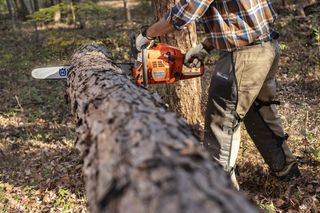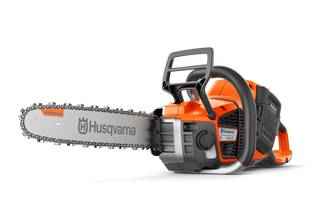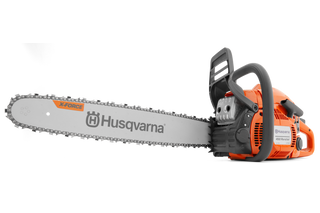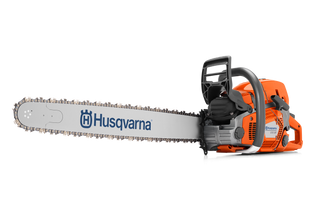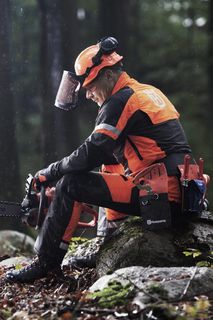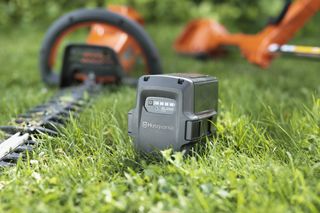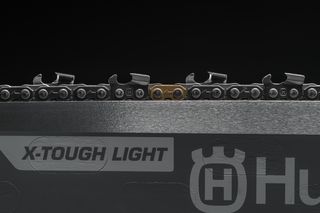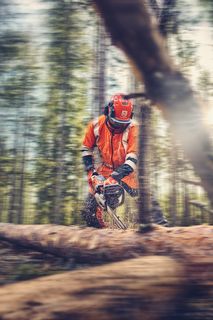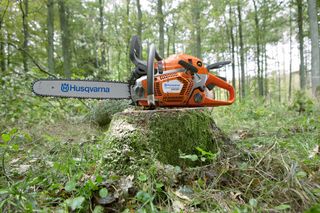Chainsaw Guide for Homeowners
There are many excellent chainsaws on the market – but which one is right for you? Here are the factors to consider when buying a new chainsaw.
Chainsaws were once the exclusive tools of farmers and lumberjacks. Today, many homeowners use them for cutting firewood, pruning trees and building fences. As they’ve grown in popularity, so have the options! As a result, shopping for a new chainsaw can feel a little overwhelming. Husqvarna is here to help you make a smart and informed chainsaw purchase. More importantly, we want you to stay safe at all times. Together with our articles about chainsaw safety, starting and sharpening, we’ve got the information you need to have a positive chainsaw experience.
Determine the best guide bar length
The appropriate length of the guide bar is determined by tree size and to some extent by the level of your expertise. If you’re used to handling a chainsaw, you should have access to at least two different guide bar lengths, allowing you to vary the guide bar length with different tree sizes. A shorter guide bar weighs less and is easier to maneuver when removing tree limbs. A longer guide bar is used for felling larger trees.
Battery vs gas chainsaws
The first factor to consider when choosing a chainsaw is whether you’d prefer a gas-powered saw or a battery model. Each option has its own set of advantages to consider.
Generally gas chainsaws deliver the most power – although select battery saws offer exceptional performance. In addition, Husqvarna has spent decades honing our gas chainsaw technology, leading to numerous breakthrough innovations such as:
- Low Vib® anti-vibration dampeners that absorb vibration
- Air Injection centrifugal air cleaning that reduces wear and tear on the engine
- AutoTune that adjusts the carburetor automatically
On the other hand, Husqvarna’s battery chainsaws are highly efficient and offer instant push-button startups. These chainsaws are also quiet, low-maintenance and produce zero direct emissions, with lithium-ion batteries that deliver long runtimes between charges. Plus they’re lightweight and create fewer vibrations, making work easier on your hands, arms and shoulders.
Select the right chainsaw size
Size is the another factor to consider when selecting a chainsaw. Generally speaking, larger chainsaws are more powerful than smaller chainsaws – therefore, they’ll be used for larger cutting tasks. Chainsaw power is measured by piston displacement (cc) and engine power (horsepower, or HP). A good chainsaw dealer can describe the different attributes in greater detail.
Consider the following factors when making your choice:
Your personal experience. If you’re new to chainsaw work, choose a smaller saw that’s easy to handle and maneuver. A heavier chainsaw will tire out your arms and hands, risking your safety and slowing down productivity.
The size and type of the wood to be cut. If you’re felling trees or cutting into hardwood, choose a larger chainsaw with more power. Using a model that’s too small will lead to unnecessary physical exertion, and it may damage the product.

Choose the right chainsaw type
Husqvarna offers four main types of chainsaw, each designed with a particular user in mind:
Homeowner/consumer chainsaws are compact, easy-to-use and designed for occasional residential use.
Landowner/semi-professional chainsaws are built for performance and durability. Preferred by ranchers, these saws are designed for occasional use in clean-up and firewood cutting.
Logger/professional chainsaws provide maximum performance and optimal ergonomics to foresters, loggers and arborists. These models are designed for professional full-time use. Certain models are available with special features, such as heated handles or AutoTune.
Arborist/tree care chainsaws are designed specifically for professional arborists in tree care work.
